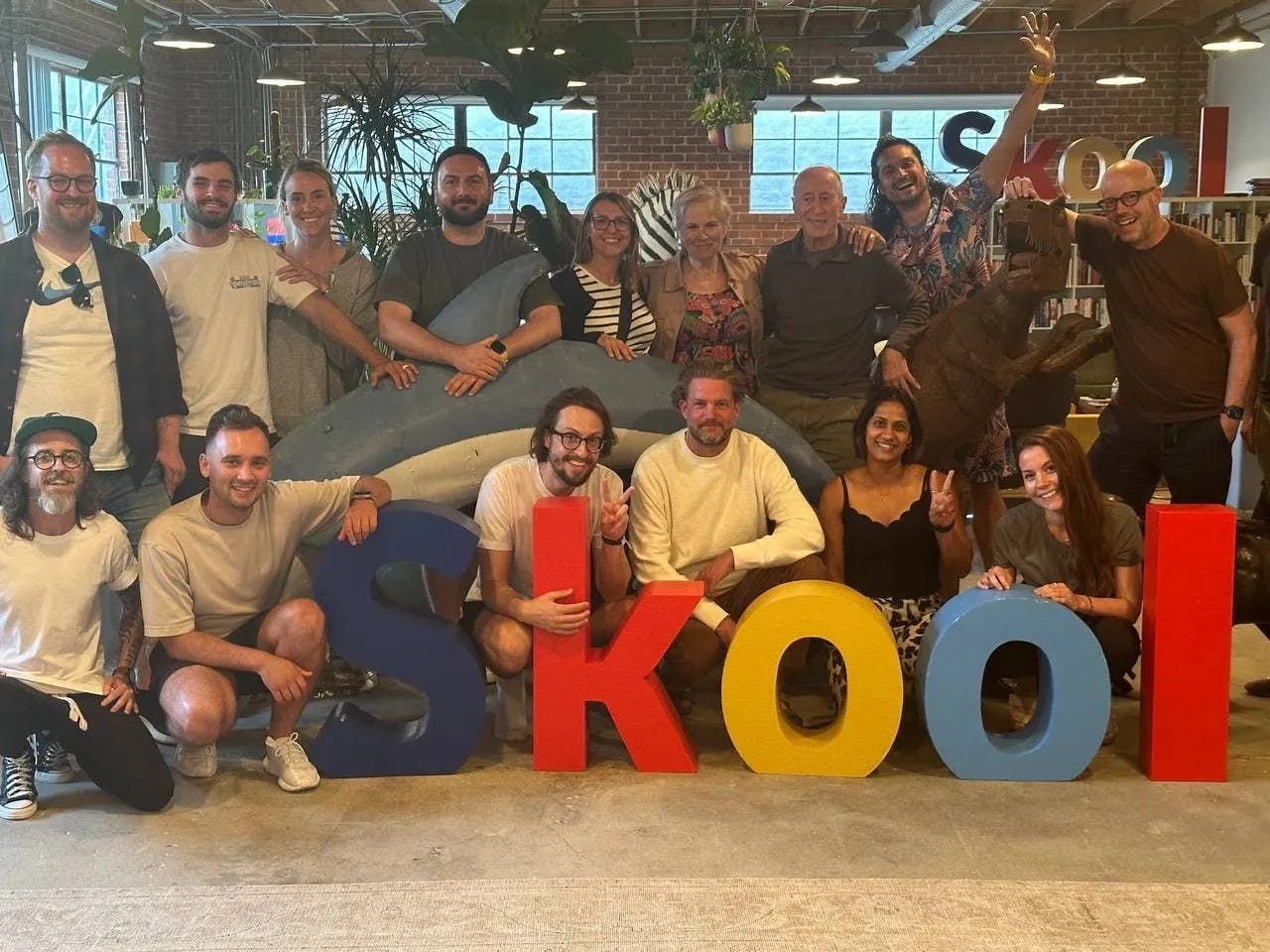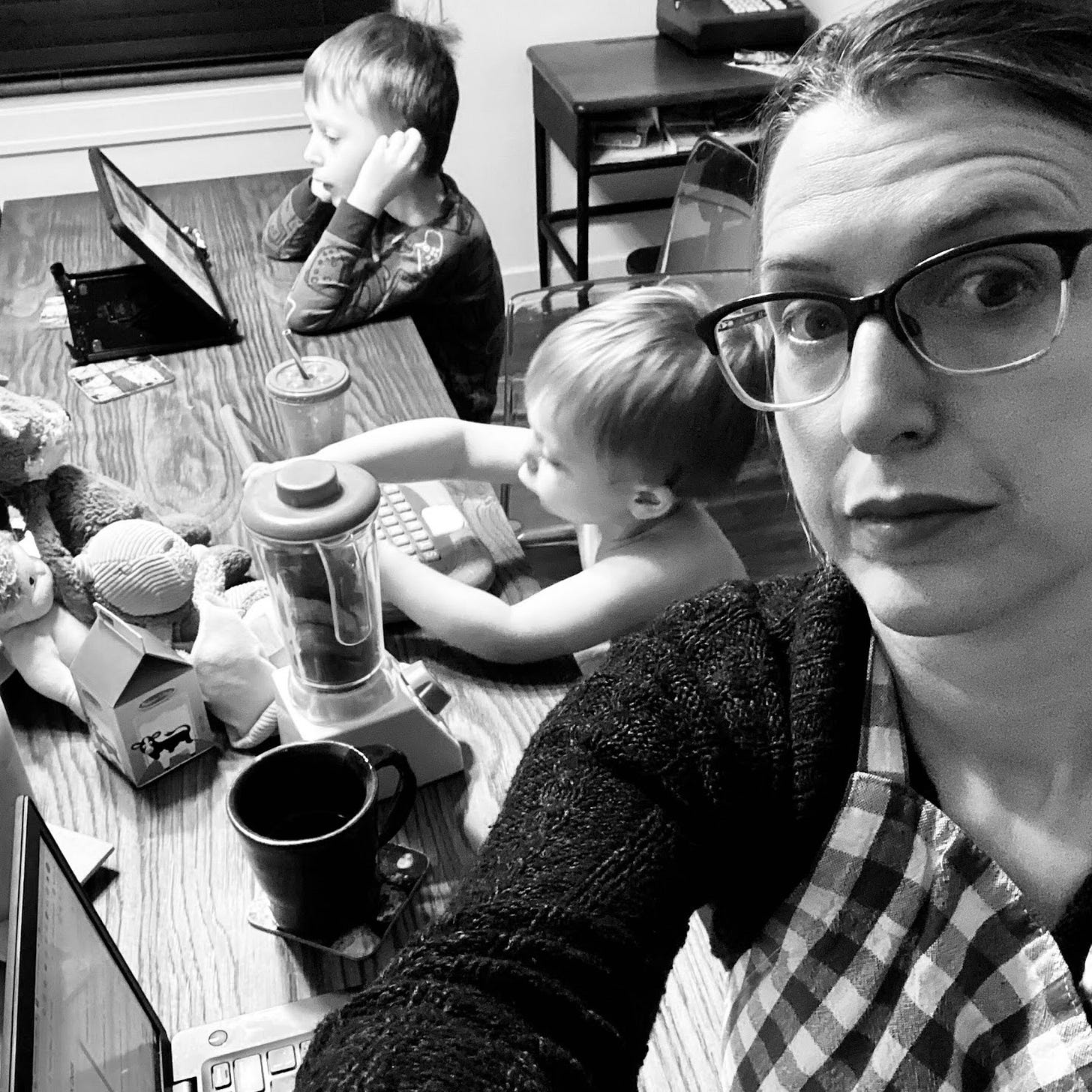Hello! This post marks a new series that explores a question becoming increasingly critical:
How might we co-intelligently work with AI to leverage our strengths while managing our limitations?
This isn't just theoretical exploration. It's born from my own reality as a full-time working mom building a business on the side, recently facing burnout from trying to handle everything alone.
The timing of this series creates a perfect bridge between my recent exploration (see my last three posts 1, 2, 3) of "The Six Types of Working Genius" and my upcoming deep dive into Ethan Mollick's "Co-Intelligence: Living and Working with AI." The connection isn't coincidental. Understanding our Working Genius becomes even more powerful when we can use AI to fill our Working Frustration gaps.
The Entrepreneurial Identity Shift
My journey toward this question began last August at Jonathan Courtney's LA Mastermind. As the CEO of AJ & Smart and my mentor in the facilitation space, Jonathan's insights consistently challenge conventional thinking. Within the first few hours, I experienced an unexpected identity shift.
"I'm not an entrepreneur," I thought to myself, feeling disconnected from the typical entrepreneur stereotype, young, male, unattached, and completely business-focused.
Then reality hit: that's exactly what I am. As a working mom in the U.S., I simply hadn't recognized my entrepreneurial identity because it didn't match the traditional image.
This recognition opened my eyes to a fundamental challenge many of us face - building businesses while maintaining other life priorities and responsibilities.

Debunking the Solopreneur Myth
One of Jonathan's most impactful points addressed "the myth of solopreneurs." His argument was straightforward: unless your entire life revolves around your business - no family responsibilities, no other commitments, complete willingness to sacrifice everything for work - true solo entrepreneurship is unsustainable.
The traditional solutions involve hiring help, finding business partners, or using virtual assistants. But in August, we weren't yet discussing how AI could fundamentally change this equation for solo entrepreneurs and small teams.
This becomes particularly relevant when viewed through the Working Genius framework. My business partner and I both share the same Working Geniuses - Invention and Discernment. We excel at generating ideas and evaluating their merit, but we have clear gaps in other areas like Galvanizing (motivating action) and Tenacity (seeing projects through to completion).
The framework assumes you have a team of four or five people covering most aspects of the WIDGET model: Wonder, Invention, Discernment, Galvanizing, Enablement, and Tenacity. But what happens when you're building a business with limited resources and can't afford to hire for every gap?
The Burnout Reality
Let me be transparent about why this exploration became urgent rather than academic. Over the past few months, I've felt genuinely burnt out. I've questioned my why, considered quitting, and struggled to maintain motivation while juggling a full-time job, two young children, and building a business.
I don't want to quit, and a recent trip to Berlin where I reconnected with Jonathan and several other awesome people reinvigorated my passion. But I realized I need a fundamentally different approach to working with my constraints rather than against them.
I'm committed to being a full-time working mom while building meaningful work. I refuse to wait until retirement to pursue my passions like gardening and art-making. There has to be a sustainable way to create the life and business I want without sacrificing family time or personal fulfillment.

The Strategic Framework
This exploration operates within a larger strategic framework focused on sustainable entrepreneurship. The goal isn't just efficiency or keeping up with technology trends. It focuses on creating a way to honor my Working Genius while not burning out on Working Frustrations.
For solo entrepreneurs and small teams, AI represents an opportunity to punch above our weight class. Instead of hiring for every skill gap or working ourselves to exhaustion, we can strategically deploy AI to handle tasks outside our genius zones.
This approach requires shifting from thinking about AI as a replacement tool to viewing it as a co-intelligent partner. The human brings creativity, judgment, strategic thinking, and domain expertise. AI provides processing power, pattern recognition, content generation, and task automation.

Professional Implications
As companies begin requiring AI literacy, understanding these tools becomes essential for career security. I maintain good job security but refuse to become complacent. I want to remain highly employable even if I had to reapply for my position today.
Part of my current role involves reimagining job descriptions for product leaders and managers, incorporating AI literacy as a core competency. This isn't just about using ChatGPT occasionally, it's about fundamentally understanding how AI can enhance strategic thinking, product development, and team leadership.
The Bigger Vision
This series documents a real-world experiment in sustainable entrepreneurship. I'm not just testing AI tools, I'm exploring whether it's possible to build meaningful work while maintaining the life balance that matters most.
The traditional entrepreneurship narrative requires sacrificing everything for business success. I'm interested in proving there's another way, one where you can be a dedicated parent, maintain personal interests, contribute meaningfully to your full-time role, and still build something impactful on the side.
AI isn't magic, but it might be the force multiplier that makes this vision achievable. Over the coming weeks, I'll share real experiments, honest failures, and practical successes as I explore how co-intelligence can support the kind of balanced, sustainable entrepreneurship I believe is possible.
Again, the question driving everything:
How might we co-intelligently work with AI to create the professional and personal lives we actually want, rather than the ones we think we're supposed to want?
Can’t wait to dialogue with you in this next book!
Whenever you're ready, I can help you with:
Workshop design and facilitation
Facilitation and workshop training
Intention setting, planning, and incremental progress for success
















Share this post